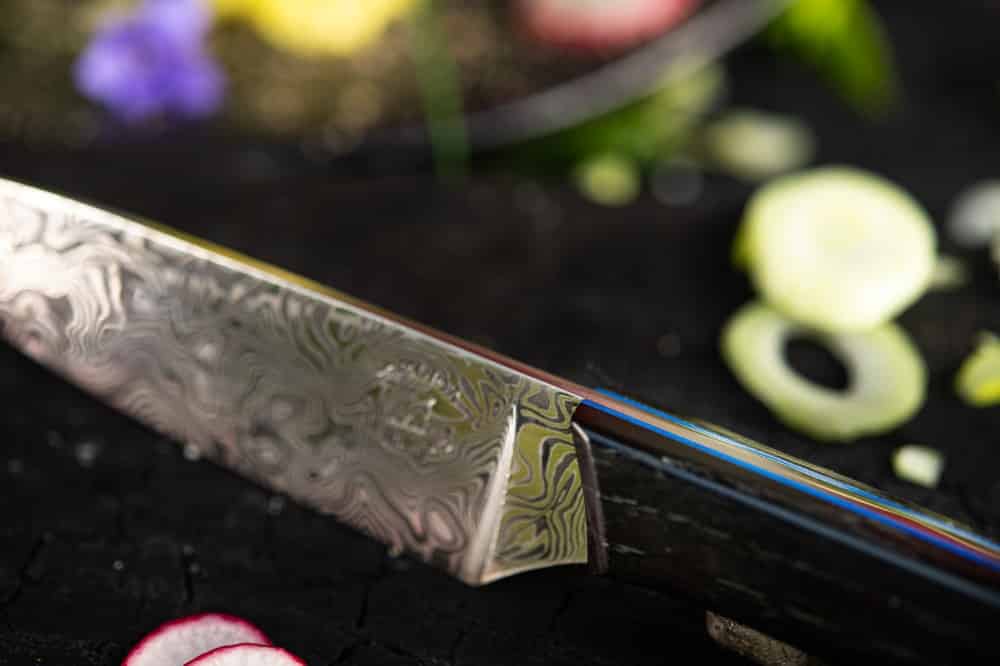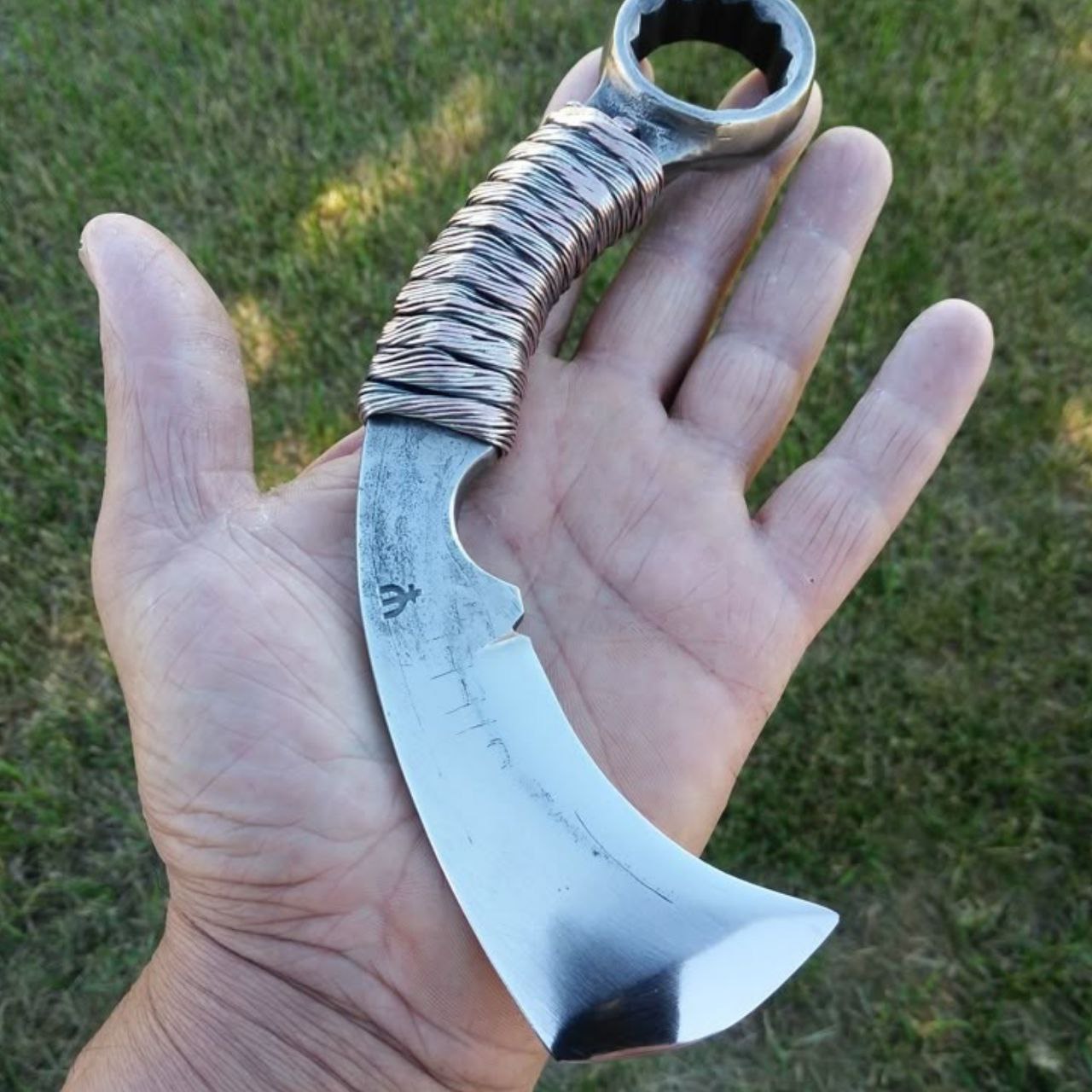1 – Choosing the right steel types
Different steels have varying properties and characteristics that can affect the final outcome of your blade.

It’s important to consider factors like hardness, toughness, corrosion resistance, and ease of working with the steel during fabrication. Some common options for forging Damascus knives include high carbon steels like 1080 and 1095, as well as alloyed steels such as S30V or D2.
These steels offer excellent performance and are popular choices among knife makers. By carefully selecting the right steel types for your project, you can ensure that your Damascus knife turns out strong, durable
2 – Proper heat treatment techniques
To ensure the quality and durability of a Damascus knife, proper heat treatment techniques are crucial. This involves carefully heating the steel to specific temperatures and then cooling it rapidly or slowly to achieve the desired hardness and toughness.
The process may include steps such as normalization, quenching, tempering, and annealing. Each step has its own purpose in refining the steel’s molecular structure, enhancing its strength while minimizing brittleness.
3 – Designing the pattern
This process involves carefully selecting and arranging different types of steel to achieve the desired pattern.
Knifemakers can experiment with various combinations of steel, such as high carbon and low carbon or different grades of stainless steel, to create contrasting colors and textures.
The patterns can range from swirls and waves to bold lines and geometric shapes. By thoughtfully considering the design elements, including the size, placement, and orientation of each layer of steel, artisans can create beautiful patterns that enhance both the functionality and aesthetic appeal of their Damascus knives.
4 – Sharpening and polishing the blade
To achieve a sharp and polished blade, the final step in making a Damascus knife is sharpening and polishing. This process not only enhances the cutting performance but also brings out the beauty of the blade.
Using high-quality sharpening stones or sandpaper, you need to carefully grind the edge of your knife at an angle until it forms a razor-sharp edge. Start with coarser grits and work your way up to finer ones for a smooth finish.
After achieving the desired sharpness, move on to polishing by buffing the blade with a leather strop or fine-grit sandpaper. This will give it a mirror-like shine that truly showcases its unique pattern-welded design.
